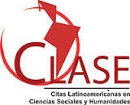Operation Odessa: the flight of nazi war criminals to Latin America after world war II and the nazi hunters
DOI:
https://doi.org/10.5433/2176-6665.2014v19n1p41Keywords:
Fourth Reich, Nazism, Latin America, ImaginaryAbstract
This article aims to analyze why Latin America, especially Argentina, was the region of the world that harbored the most Nazi war criminals—for example, Josef Mengele, Adolf Eichmann and Klaus Barbie—after World War II. It also aims to analyze how this fact has set the tone for the appearance of literary works about the fantastic adventures of “Nazi hunters” seeking the whereabouts of those individuals. For this purpose, in the first part of the article we will address Nazis’ escape to Latin America. Next, we analyze some literary works by authors who called themselves Nazi hunters.Downloads
References
BURNSIDE, Patrick. El escape de Hitler. Buenos Aires: Planeta, 2000.
COMISIÓN PARA EL ESCLARECIMIENTO DE LAS ACTIVIDADES DEL NAZISMO EN ARGENTINA - CEANA. Primer informe de avance. Buenos Aires, Argentina, mar. 1998.
COSTA, Sergio Correa. Crônicas de uma guerra secreta. Rio de Janeiro: Record, 2004.
DE NAPOLI, Carlos; SALINA, Juan. Ultramar Sul: a última operação secreta do Terceiro Reich. Rio de Janeiro: Civilização Brasileira, 2010.
ERDSTEIN. Erich; BEAN, Bárbara. Renascimento da Suástica no Brasil. São Paulo: Circulo do Livro, 1977.
FARAGO, Ladislas. Aftermath: Martin Bormann and the Fourth Reich. New York: Simon and Shuster, 1974.
FARAGO, Ladislas. Aftermath: the most daring manhunt of our time. The Final Search for Martin Bormann. New York: Simon and Schuster, 1975.
FARAGO, Ladislas. Scheinot. Hamburg: Hoffmann and Campe Verlag, 1975.
FORSYTH, Frederick. O Dossiê Odessa. São Paulo: Abril Cultura, 1982.
GOMES, Laurentino. O passado desvendado. Revista Veja, São Paulo, 11 nov. 1998. p. 138.
GOÑI, Uki. A verdadeira odessa. Rio de Janeiro: Record, 2004.
JACKISH, Carlota. Cuantificación de criminales de guerra según fuentes Argentinas. In: CEANA. Comisión para el Esclarecimiento de las Actividades del Nazismo en Argentina. Informe Final. Argentina, 1999.
LOWENTHAL, David. Como conhecemos o passado. Projeto História, São Paulo, n. 17, p. 63-201, nov. 1998.
MAUCH, Cláudia. Os alemães no sul do Brasil. Canoas: Ed. ULBRA, 1994.
MEDING, M. Holger. Cuantificacion de criminales de guerra segun fuentes alemanas y austríacas. In: CEANA. Comisión para el Esclarecimiento de las Actividades del Nazismo en Argentina. Primer informe de avance. Argentina,1998.
NINIO, Marcelo. Mossad descobriu Mengele no Brasil, mas não o deteve. Folha de São Paulo, São Paulo, 31 de out. 2010. Disponível em: http://www1.folha.uol.com.br/fsp/poder/po3110201002.htm.
PALÁCIOS, ARIEL. Peron e o terceiro Reich. 2009. Disponível em: . http://blogs.estadao.com.br/ariel-palacios/peron-e-o-terceiro-reich. Acesso em:8 jan. 2013.
SANFILIPPO, Matteo. Los papeles de Hudal como fuente para la historia de la migración de alemanes y nazis después de la Segunda Guerra Mundial. Estudios Migratorios Latinoamericanos, v. 14, n. 43, p. 185-210, 1999.
SZABO, Lasdilao. Hitler está vivo. Argentina: Tabano, 1947.
WHITING, Charles. À caça de Martin Bormann. Rio de Janeiro: Civilização Brasileira, 1977.
WIESENTHAL, Simon. Biografias. Disponível em: http://educacao.uol.com.br/biografias/ult1789u619.jhtm. Acesso em: 21 jan. 2010.
WILLIAMS, Gerrard; DUNSTAN, Simon. Grey Wolf: the escape of Adolf Hitler. United Kingdom: Sterling, 2011.
Downloads
Published
How to Cite
Issue
Section
License
Copyright on articles published in Mediações belongs to the author(s): in the case of partial or entire republication of the original publication, we ask author(s) to indicate the original publication in the periodical.
Mediações uses the Creative Commons Attribution 4.0 International license, which allows Open Access, enabling any user to read, download, copy and disseminate its content so long as adequately referenced.
The opinions expressed by the author(s) are their sole responsibility.
































